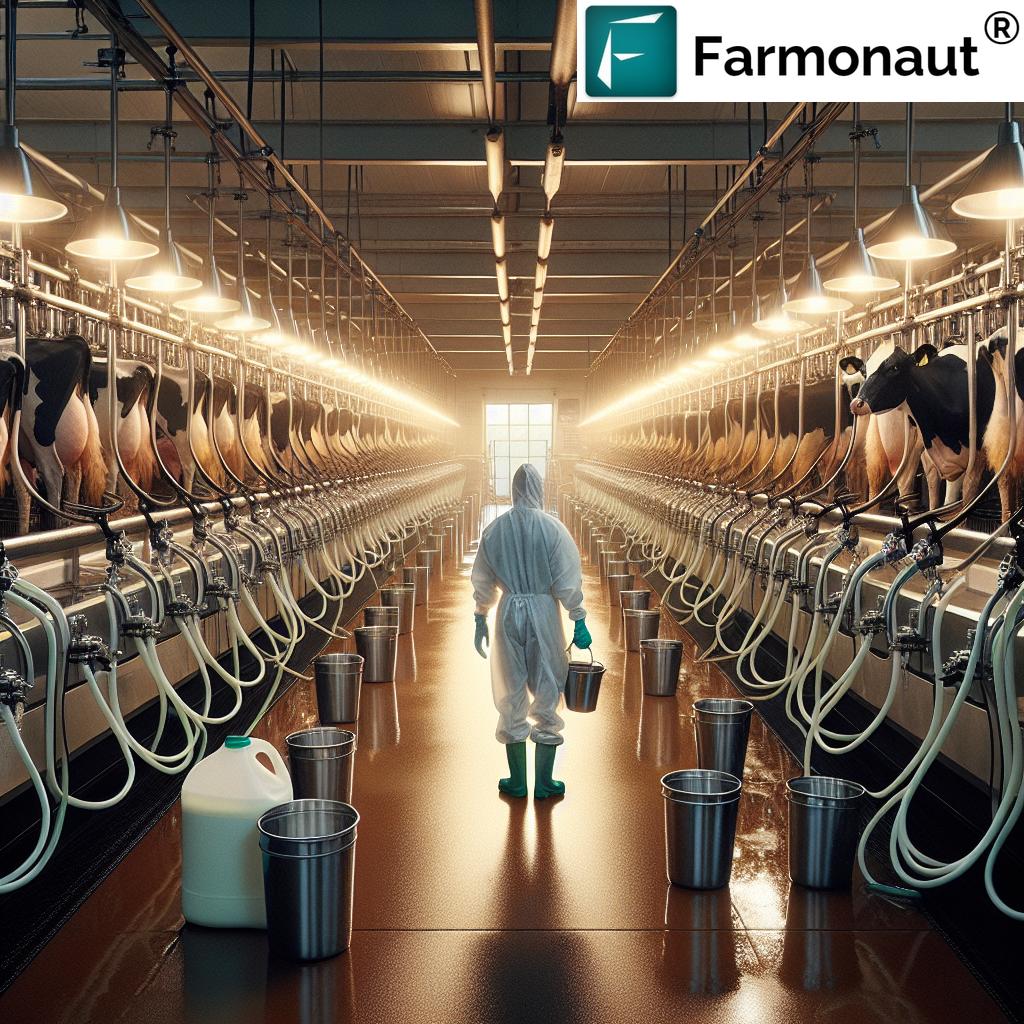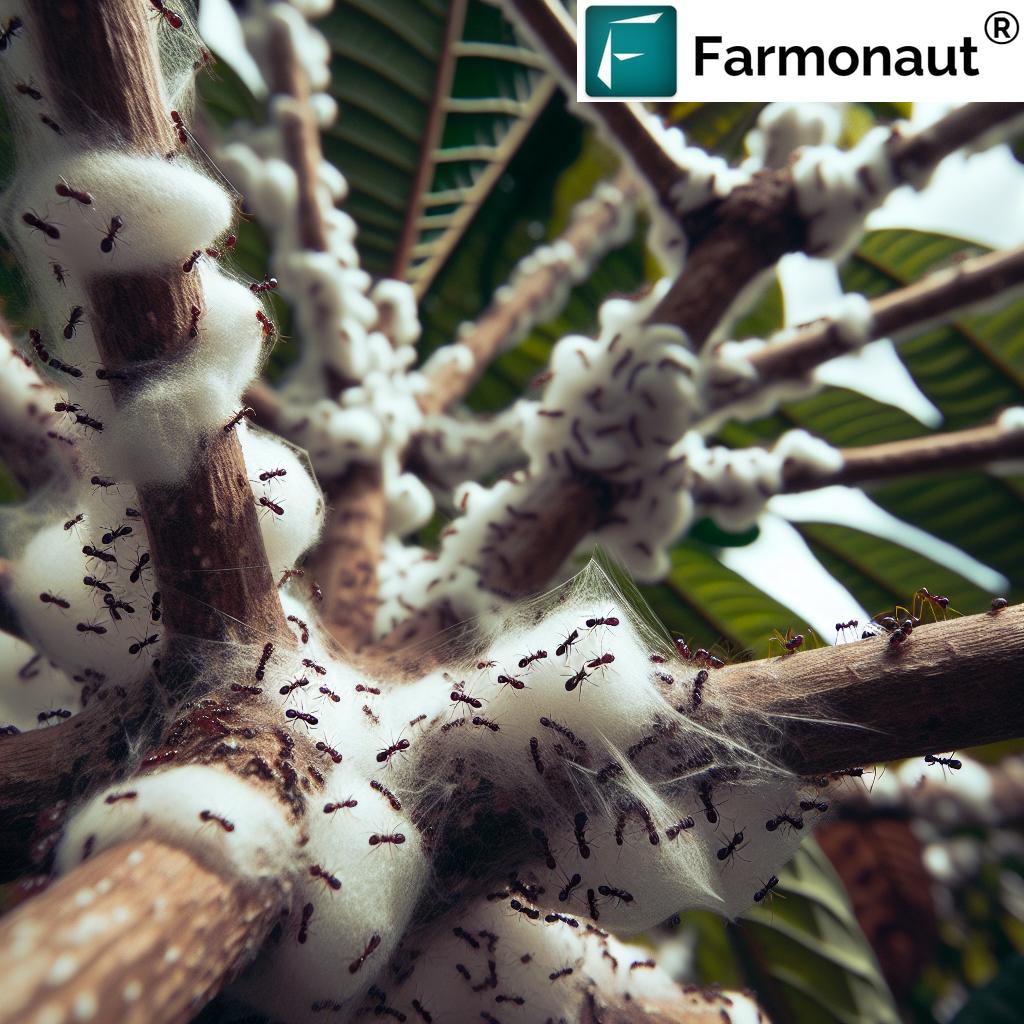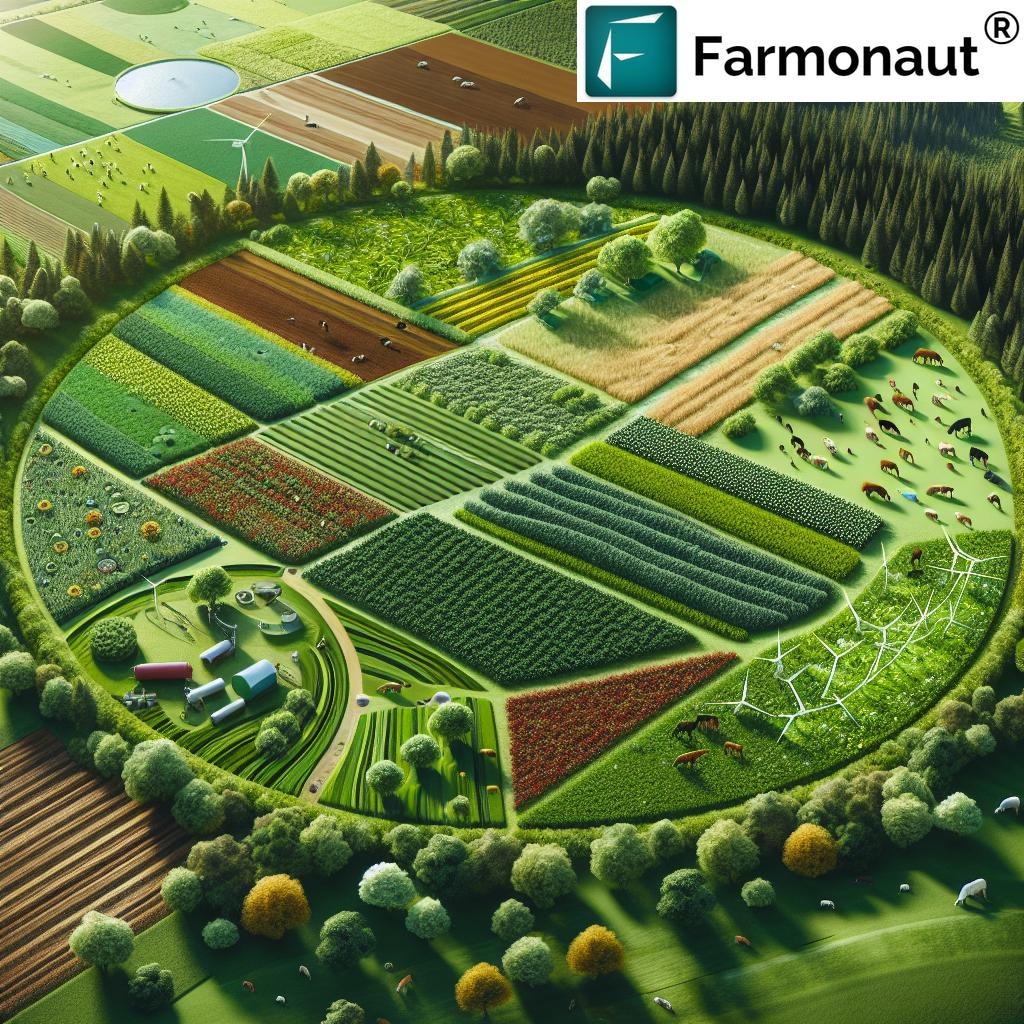Crop Science Secrets: 7 Innovations You Must See!
“CRISPR gene editing can boost crop yields by up to 20% through precise genetic improvements.”
The field of crop science is undergoing a transformation at the intersection of plant biology, genetics, soil science, and technology-driven agronomy.
Whether we are striving for improved yields, superior soil health and fertility, or resilience to climate change and crop adaptation, it’s clear that sustainable agriculture practices now rely on multidisciplinary innovations.
In this blog, we uncover the seven most groundbreaking advancements revolutionizing crops for food, animal feed, and industrial applications. We’ll explain, with expert clarity, how mastering plant genetics and breeding, precision agriculture technologies, and data-centric farm management unlocks a resilient and productive future for agriculture.
We invite fellow farmers, agronomists, business leaders, policymakers, and anyone passionate about food security to explore these secrets of crop science with us—and see how companies like Farmonaut are making next-gen innovation accessible to all.
Explore Farmonaut’s Satellite and Weather API
|
Read Developer Docs
1. Marker-Assisted Plant Genetics and Breeding (Focus Keywords: crop science, plant genetics and breeding, improved crop yield and quality)
To feed our ever-growing global population, we must develop new varieties of crops that excel in yield, nutritional value, and resilience. This is where plant genetics and breeding emerge as game-changers, blending traditional knowledge with the latest biotechnological approaches:
- Marker-Assisted Selection (MAS): Instead of relying solely on visible characteristics, scientists now use genetic “markers” to select plants carrying desired traits—such as resistance to disease, drought, or salinity—accelerating the breeding process and ensuring better results.
- Selective Breeding: We systematically combine plants with the best traits from different lines, producing improved varieties far more quickly and efficiently than before.
- Genomic Prediction: Using massive DNA databases and data analytics, breeders predict crop performance and make smarter selection decisions, often before plants even flower.
For example, rice varieties tolerant to flooding, wheat resistant to rust fungi, and tomatoes with enhanced vitamin content have all been fast-tracked by combining genomics and classical breeding. This translates directly to higher yields, more nutritious food, and crops better equipped to handle climate challenges.
“Cover crops can reduce soil erosion by 58%, enhancing long-term soil health and sustainability.”
2. Precision Agriculture Technologies for Crop Management (Focus Keywords: precision agriculture technologies, crop management, resource use)
In the past, farmers applied inputs such as water and fertilizer uniformly across their entire field. Today, precision agriculture shifts this paradigm. Using GPS, remote sensing, and data-driven decision tools, we now monitor and manage field variability at an unprecedented scale.
- Variable Rate Application (VRA): By applying nutrients, water, or pesticides in just the right amounts and locations, we reduce input waste, minimize environmental impact, and optimize productivity.
-
Satellite-Based Health Monitoring:
Technologies like those offered by Farmonaut let us use multispectral images to track crop growth and soil moisture. By identifying problem spots early, we can target interventions to only when and where they matter most. - IoT Sensors & Automation: Soil moisture sensors, weather stations, and autonomous tractors further enhance the timing and accuracy of field operations.
- AI Advisory Platforms: Tools like Farmonaut’s Jeevn AI bring smart, real-time recommendations to farmers’ mobile devices, improving daily management and boosting efficiency.
The outcomes? Maximized yields, improved resource efficiency, and reduced environmental impact—all pillars of sustainable agriculture practices.
Looking to optimize farm inputs, maximize output, and monitor crops from anywhere?
Learn how Farmonaut’s Large Scale Farm Management solution enables real-time monitoring and smart resource allocation for plantations of any size.
3. Soil Health and Fertility Innovation (Focus Keywords: soil health and fertility, crop science, sustainable agriculture practices)
Healthy soil is the very foundation of bountiful, sustainable crop production. Yet soil degradation, erosion, and nutrient loss threaten yields and food security worldwide. Modern crop science brings together agronomy and soil biology to reverse these trends.
- Cover Crops: By planting fast-growing legumes, grasses, or brassicas during fallow periods, we increase soil organic matter, prevent erosion, and disrupt pest cycles. Cover crops also reduce nitrogen leaching, lowering input costs and enhancing fertility.
- Crop Rotation: Rotating cereals with pulses, oilseeds, or root crops improves nutrient cycling, curbs disease buildup, and maintains a healthier soil ecosystem.
- Reduced Tillage: Limiting mechanical soil disturbance preserves structure, encouraging beneficial microbial activity and water retention.
- Soil Monitoring: Digital tools—like those in Farmonaut’s platform—track moisture, pH, and organic matter. This informs precise nutrient management decisions rather than relying on costly guesswork.
With these strategies, not only do we protect the soil, but we develop robust cropping systems that yield more and weather climate extremes more effectively.
Traceability from seed to market is crucial for food safety and sustainability. Discover Farmonaut’s Blockchain-Based Product Traceability Solutions—empowering you to track every step in your supply chain.
4. Integrated Pest Management (IPM) Advances (Focus Keywords: integrated pest management, pest control, sustainable agriculture practices)
Managing pests is a significant challenge in agriculture, often requiring a delicate balance between effective control and environmental responsibility. Modern integrated pest management (IPM) brings together the best of biological, cultural, physical, and chemical approaches, helping us maintain crop health while minimizing risks.
- Biological Controls: Introducing natural predators, parasites, or pathogens helps keep pest populations in check without chemical residues.
- Cultural Techniques: Crop rotation, intercropping, and careful planting schedules reduce pest establishment and survival.
- Physical Barriers & Monitoring: Using row covers, traps, and digital pest population monitoring enables timely, targeted interventions.
- Judicious Chemical Use: Pesticides are selected and applied only as a last resort—reducing chemical exposure and safeguarding human health and the environment.
Advancements in data collection and remote sensing—like Farmonaut’s early warning systems—let us monitor pest outbreaks in real time, ensuring interventions are optimized for both yield and sustainability.
5. Controlled-Environment Agriculture and Climate Adaptation (Focus Keywords: controlled-environment agriculture, climate change and crop adaptation)
Climate change is already impacting global food production through erratic weather, drought, floods, and rising pest and disease threats. Crop science now focuses on climate adaptation strategies integrated with advanced technologies.
- Controlled-Environment Agriculture (CEA): Greenhouses, vertical farms, and hydroponic systems allow us to tightly regulate temperature, humidity, light, and nutrients. CEA enables all-year-round production, minimal resource waste, and insulation from external climate variability.
- Drought and Heat-Tolerant Crops: By leveraging advanced genetics and molecular breeding, we are developing new varieties with greater adaptive potential, ensuring food security in changing climates.
- Agroforestry: Integrating trees and shrubs with crop or pasture systems not only buffers climate impacts but also enhances biodiversity, improves soil health, and sequesters carbon.
Leading farms and food companies increasingly measure their carbon footprint. Interested? Discover Farmonaut’s Carbon Footprinting Tools—track, reduce, and report agricultural emissions with ease.
6. Biotechnological Breakthroughs: CRISPR & Beyond (Focus Keywords: biotechnology in agriculture, crop science advancements)
Biotechnology in agriculture is not about dramatic departures from nature—it’s about harnessing the language of life to deliver improved crop yield and quality with pinpoint accuracy.
- CRISPR Gene Editing: This revolutionary biotechnology enables scientists to make ultra-precise edits to a crop’s DNA. Goals include adding drought tolerance, disease resistance, and even boosting essential nutrients—all while avoiding foreign gene insertions common to older transgenic methods.
- RNA Interference (RNAi): Silencing specific genes conferring susceptibility to pests or diseases, with minimal off-target effects.
- GM & Transgenic Crops: While tightly regulated in many regions, GM crops have increased yield, reduced pesticide use, and given farmers new options in pest and weed control.
With regulatory frameworks evolving, CRISPR and similar approaches are set to power the next generation of crop science advancements.
7. Data Analytics and Smart Resource Management (Focus Keywords: crop science, data analytics, resource management, improving crop yield and quality)
Modern crop science isn’t just about the plants—it’s about the information that drives better decisions across every stage of crop production.
- Yield Prediction Models: Sophisticated algorithms, powered by farm data, climate records, and satellite inputs, help us anticipate crop performance and plan market engagements more accurately.
- AI-based Advisory Systems: Farmonaut’s Jeevn AI analyzes remote and ground data to offer personalized advice—from planting dates to pest warnings and input optimization.
- Blockchain Traceability: Every step in the supply chain is recorded, ensuring transparency and trust from farm to fork.
- Smart Financing: Institutions now use satellite-based verification tools for crop loans and insurance claims, reducing fraud and broadening access to credit for small and large farmers.
The unifying thread? Real-time, data-driven resource management means higher efficiency, less waste, and greater resilience to market and climate shocks.
Comparative Innovation Impact Table
| Innovation Name | Technology Type | Estimated Yield Improvement (%) | Soil Health Impact | Climate Adaptation Benefits | Brief Description |
|---|---|---|---|---|---|
| Marker-Assisted Plant Genetics & Breeding | Molecular Markers, Genomics | 15–40% | Medium | Enhanced drought/disease tolerance | Accelerates selection of high-performing crop varieties using DNA markers. |
| Precision Agriculture Technologies | IoT, AI, GPS, Remote Sensing | 10–25% | Medium | Optimized input use, resilience to variability | Field variability managed via real-time data, improving resource application. |
| Soil Health & Fertility Enhancement | Cover Crops, Sensors | 8–18% | High | Prevents erosion, improves water use | Biological and digital methods preserve structure, boost organic matter. |
| Integrated Pest Management (IPM) | Biological & Digital Tools | 7–15% | Medium | Reduced chemical use, outbreak prevention | Combines eco-friendly strategies for sustainable pest control. |
| Controlled-Environment Agriculture | Hydroponics, Automation | Up to 60% | Low/Neutral | 100% shielded from weather extremes | Optimized environments enable consistent quality and production. |
| Biotechnology (CRISPR, RNAi) | Genome Editing | 10–25% | Medium | Builds durable crop resilience | Edits or silences genes for targeted improvements without transgenes. |
| Data Analytics & AI Resource Management | Big Data, Machine Learning | 5–20% | Medium | Forecasts shocks, increases efficiency | Real-time monitoring enables adaptive, sustainable management. |
Farmonaut: Democratizing Precision Agriculture Globally
Farmonaut stands at the cutting edge of agricultural technology, breaking down barriers to precision agriculture and data-driven crop science. Our mission: make advanced solutions affordable and accessible for every farmer—whether you manage 1 hectare or 1,000.
-
Satellite-Based Crop Monitoring:
Using multispectral imagery, Farmonaut offers real-time assessments of crop health, soil moisture, and other essential metrics. This empowers informed decisions—on fertilizer, irrigation, and pest management. -
Jeevn AI Advisory System:
Our AI-driven tool provides daily guidance, actionable weather forecasts, and personalized crop management suggestions. -
Resource & Fleet Management:
Keep track of machinery, optimize logistics, and streamline farm operations—all from your smartphone or PC. -
Blockchain-Enabled Product Traceability:
Gain transparency for supply chains, build customer trust, and meet compliance requirements easily. -
Carbon Footprinting:
Monitor and reduce your farm’s environmental impact with real-time emissions tracking and reporting. -
Scalable, Flexible Platform:
Choose from individual, cooperative, or enterprise packages, and access our platform on Android, iOS, and web.
Looking for direct access to Farmonaut’s solutions? Click these download/app links for your device, or sign up for institutional access through our API:
Farmonaut Subscriptions
Ready to supercharge your farm or agribusiness?
Explore flexible subscription packages, tailored to operations of any size:
“Cover crops can reduce soil erosion by 58%, enhancing long-term soil health and sustainability.”
Frequently Asked Questions: Crop Science Innovations
What is the focus of modern crop science?
Our current focus is to enhance crop yield and quality while implementing sustainable agriculture practices. This involves a blend of plant genetics and breeding, agronomy and crop management, precision agriculture technologies, and innovations in soil health and fertility.
How do satellite and AI technologies help farmers?
Satellite-based monitoring offers real-time insights into crop health, soil moisture, and field conditions. AI-based advisory systems like Farmonaut’s Jeevn AI analyze this data for tailored decision-making, optimizing inputs and maximizing productivity and returns.
What is Integrated Pest Management (IPM) and why is it important?
IPM is a sustainable approach to pest control combining biological, cultural, physical, and limited chemical tools. It helps reduce chemical residues, supports environmental health, and increases long-term resilience of farm systems.
What are the benefits of cover cropping and reduced tillage?
These agronomic practices prevent soil erosion, improve structure, conserve moisture, and foster microbial activity—leading to healthier, more productive soil and better adaptation to weather variability.
How does Farmonaut differ from other agricultural technology providers?
Farmonaut democratizes precision agriculture by relying on affordable satellite imagery, AI, data analytics, and blockchain-based tools to empower farmers without requiring expensive field hardware. The platform is scalable and accessible, supporting individual farmers, large agribusinesses, cooperatives, and government institutions globally.
How can I access Farmonaut’s advanced solutions?
Download the Farmonaut app for Android, iOS, or web, and explore our subscription options. Institutional users can integrate data directly through our API interface.
Why is crop science innovation crucial for food security?
Innovations across genetics, digital tools, sustainable management, and biotechnology ensure reliable food supplies for our growing global population, help us adapt to climate change, and protect the environment for future generations.
Conclusion: The Future of Crop Science is Collaborative, Data-Driven, and Sustainable
Crop science sits at the crossroads of our most pressing challenges and brightest hopes in agriculture. We have witnessed that continuous study and improvement in plant biology, genetics, and sustainable resource management are crucial for overcoming climate obstacles, meeting rising food demand, and preserving our soils and ecosystems.
By embracing precision agriculture technologies, deploying data analytics, championing plant genetics and breeding, and implementing proven sustainable practices, we are poised to not only improve crop yield and quality but reshape agricultural production in ways that ensure our planet and people thrive together.
As disruptive innovators like Farmonaut make these advanced tools accessible to all, the future of crop science becomes a shared journey—one where multidisciplinary expertise, local knowledge, and digital insight combine to build a better agricultural tomorrow.
















